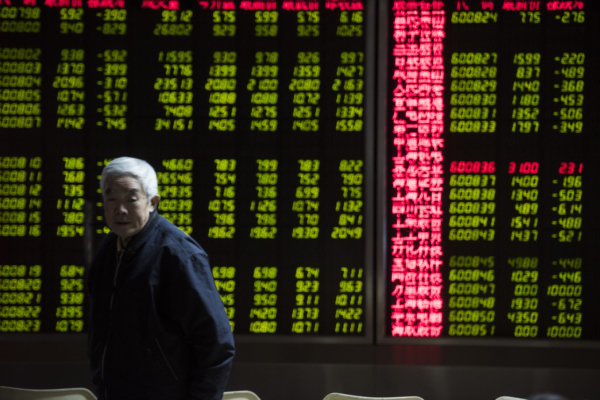On September 26th, the Chinese A-share market experienced volatile adjustments throughout the day, with all three major indexes closing lower collectively.
Among the three major indexes, the ChiNext Index representing growth stocks saw the deepest decline, dropping by over 2.5% at one point, leading to overall subdued market sentiment. By the end of the trading day, the Shanghai Composite Index fell by 0.65%, the Shenzhen Component Index declined by 1.76%, and the ChiNext Index took a hit of 2.60%. Over 3,400 individual stocks experienced decreases. The total turnover of the Shanghai and Shenzhen exchanges amounted to 2.15 trillion yuan, a decrease of 224.2 billion yuan compared to the previous trading day. This indicates a strong cautious attitude among investors and a higher willingness to exit the market.
The A-share market in China opened lower in the morning, with market trends fluctuating back and forth throughout the day, despite multiple attempts to rebound, all of which were unsuccessful.
The ChiNext Index and the STAR Market Index continued to weaken. Around 10:20 in the morning, the ChiNext Index dropped by over 1%, the Shanghai Composite Index fell by 0.33%, and the Shenzhen Component Index declined by 0.76%. Sectors such as gaming, liquid cooling servers, robotics, and high-speed copper cable connections saw prominent declines. The A-share market showed even weaker performance in the afternoon.
On the trading floor, market hotspots appeared somewhat disorganized.
There were divergences within the semiconductor sector, with companies like Liadong Microelectronics and Kaimeite Gas both hitting their trading limits. The non-ferrous metals sector showed activity, with Jingyi Shares successfully marking a three-day consecutive increase. On the downside, the gaming sector collectively decreased, where Gbit hit the limit down. Stocks related to computing power hardware weakened, with Qingshan Paper Industry hitting the limit down.
In terms of sectors, wind power and insurance led the gainers, while gaming, computing power hardware, and lithography sectors were among the top losers.
Financial blogger “Quan Ge” analyzed that after the morning market opened on the 26th, there was a slight upward push in the indexes, which quickly turned downwards. At around 10:30, there was another upward push followed by a continuous decline. In the afternoon, after a brief surge, the market began to plummet after 2 pm.
According to “Quan Ge,” unlike in the past, the STAR Market and the ChiNext Market weakened significantly, indicating a strong impact on profitability.
“Quan Ge” stated that all indexes closed lower, with many forming top structures and reaching new highs. He recommended that investors with heavy positions should consider reducing their exposure.
He mentioned that technology stocks such as robotics, artificial intelligence, and consumer electronics suffered significant declines.
“Quan Ge” pointed out the “pre-holiday effect” right before the long National Day holiday. The trading volume next week is expected to drop below 2 trillion yuan. Unless significant official policies are implemented by the end of September, such as interest rate cuts, the trading volume on the final two trading days at the end of September (next week, Tuesday) is likely to be even lower.
Amid the ongoing market adjustments, investor sentiment is generally low, as reflected in the concern raised by netizen “haoxinian_3a47db9”: “Is the bull market coming to an end?” This indicates investors’ apprehension that the recent surge might not continue and that the current downturn may represent the true trend.

